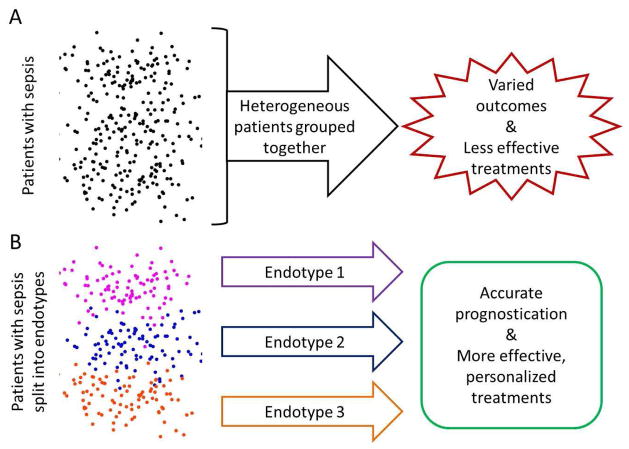Figure 1.
Schematic of the discovery and use of endotypes in sepsis. (A) All patients in a heterogeneous cohort of septic patients are treated similarly, reducing the signal-to-noise ratio and rendering prognostic and therapeutic differences less effective. (B) The same cohort is split into multiple (here three, arbitrarily) subgroups based on transcriptomic biomarkers. Each group is treated with a therapy best suited to it, and prognostic predictions are more accurate.

